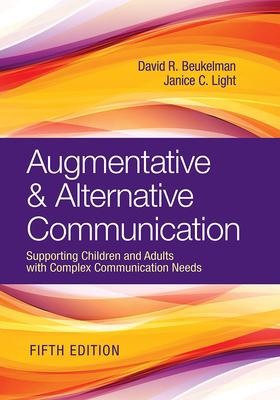Professionals will prepare for their work in the field with critical new information on:
- Collaborating with family members and other communication partners
- Making the most of mobile technologies and AAC apps
- Selecting an AAC system and tailoring it to individual needs
- Working effectively with families from diverse cultural backgrounds
- Supporting inclusion across the lifespan (including education, employment, and community life)
- Ensuring efficient patient-provider communication in medical settings
- Providing communication supports to people with autism spectrum disorder
PLUS: Enhance your teaching with a package of online companion materials, including a resource guide to help practitioners and students learn more about AAC; sample responses to chapter study questions; and a sample syllabus. TOPICS COVERED: components and phases of AAC assessment * planning, implementation, and evaluation of AAC interventions * working with families *vocabulary and message selection *multimodal communication*unaided representations * aided AAC symbols and other representations * assistive technologies that support literacy * support for beginning communicators * education * employment * assisted and independent living * health care * selection and personalization of AAC systems * AAC access techniques and output * interventions for people with developmental disabilities * interventions for people with acquired disabilities * the importance of advocacy Learn more about the new edition!
